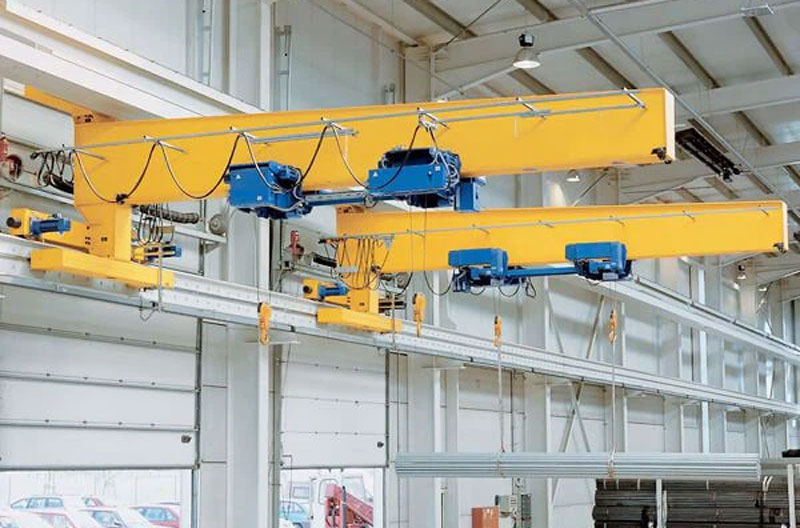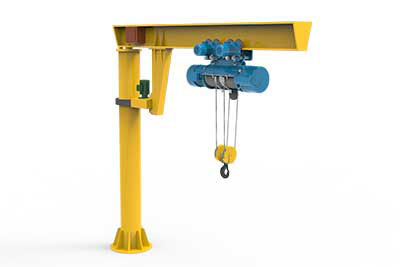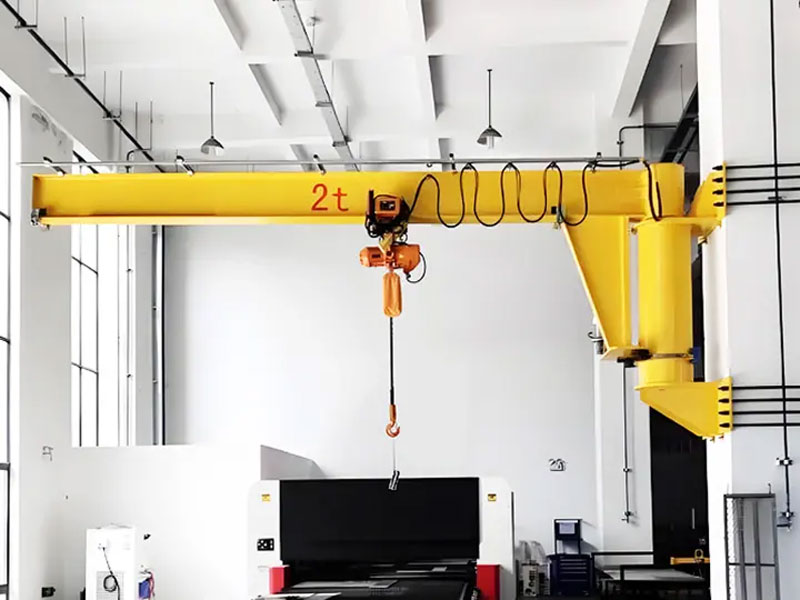La gru a bandiera: il cavallo di battaglia delle officine, banchine di carico, e linee di produzione. La sua versatilità dipende da questo punto cruciale: il gancio. Installarlo correttamente non è solo una questione di funzionalità; è un pilastro fondamentale della sicurezza. Un gancio installato male è un disastro in attesa di accadere. Questa guida ti guida attraverso i passaggi essenziali per un'installazione sicura e corretta del gancio della gru a bandiera.

1. Sicurezza: Previene guasti catastrofici al gancio e cadute del carico.
2. Stabilità: Garantisce che il carico si blocchi in modo corretto e prevedibile.
3. Longevità della gru: Previene sollecitazioni eccessive sulla struttura della gru e sui componenti di sollevamento.
4. Conformità normativa: Soddisfa l'OSHA, Norme ASME B30, e requisiti del produttore.
5. Efficienza operativa: Evita tempi di inattività dovuti a riparazioni o incidenti.
1. Leggi i manuali: Consultare sia il manuale del produttore della gru a bandiera che le istruzioni del produttore del gancio. Contengono requisiti e avvertenze specifici.
2. Ispezionare attentamente il gruppo del gancio:
3. Ispezionare il meccanismo di sollevamento:
4. Raccogli gli strumenti corretti & DPI:

1. Preparare l'area di lavoro:
2. Sostenere il gruppo gancio:
3. Allineare correttamente il gancio:
4. Innestare il fermo (Se in dotazione):
5. Proteggi la connessione:
Ganci a gambo (Filettato):
Ganci a forcella (Appuntato):
Inserire il perno di grado e dimensione corretti attraverso la forcella e l'archetto del gancio.
Fissare il perno utilizzando il metodo specificato (PER ESEMPIO., coppiglia, dado di bloccaggio). Assicurarsi che il perno sia completamente inserito e che il dispositivo di fissaggio sia correttamente agganciato.
6. Ispezione finale:
Ricontrolla l'orientamento del gancio (puntare verso l'esterno!).
Verificare che la sella sia posizionata piatta e saldamente.
Confermare il fermo di sicurezza (se presente) funziona correttamente e si chiude completamente.
Assicurare tutti i dispositivi di sicurezza (noci, perni, coppiglie) siano correttamente installati e serrati.

1. Eseguire un sollevamento di prova leggero:
Rimuovi tutti gli strumenti, materiali, e personale della zona sotto il gancio.
Sollevare con attenzione una luce molto elevata, carico non critico (significativamente al di sotto della capacità nominale della gru).
Osservare attentamente il gruppo del gancio. Controlla eventuali movimenti insoliti, rumore, legame, o disallineamento. Assicurarsi che il carico sia in piano e stabile.
2. Ispezionare di nuovo: Dopo la prova della luce, riesaminare visivamente il punto di connessione del gancio, chiavistello, e dispositivi di fissaggio per eventuali segni di allentamento o stress.
L'installazione di un gancio per gru a bandiera potrebbe sembrare semplice, ma le conseguenze di un errore sono gravi. Prendersi il tempo per ispezionare meticolosamente i componenti, seguire i passaggi corretti (soprattutto per quanto riguarda l'orientamento del gancio e il fissaggio sicuro), ed eseguire test di verifica adeguati è un investimento in sicurezza, produttività, e tranquillità. Non compromettere mai l'integrità di questo punto di sollevamento critico. Solleva in modo intelligente, ascensore sicuro!
Apprezziamo il tuo feedback! Completa il modulo sottostante in modo da poter personalizzare i nostri servizi alle tue esigenze specifiche.


Fai clic sul pulsante per ottenere informazioni sul prodotto e citazioni su WhatsApp.
Ottieni una citazione
Ultimi commenti